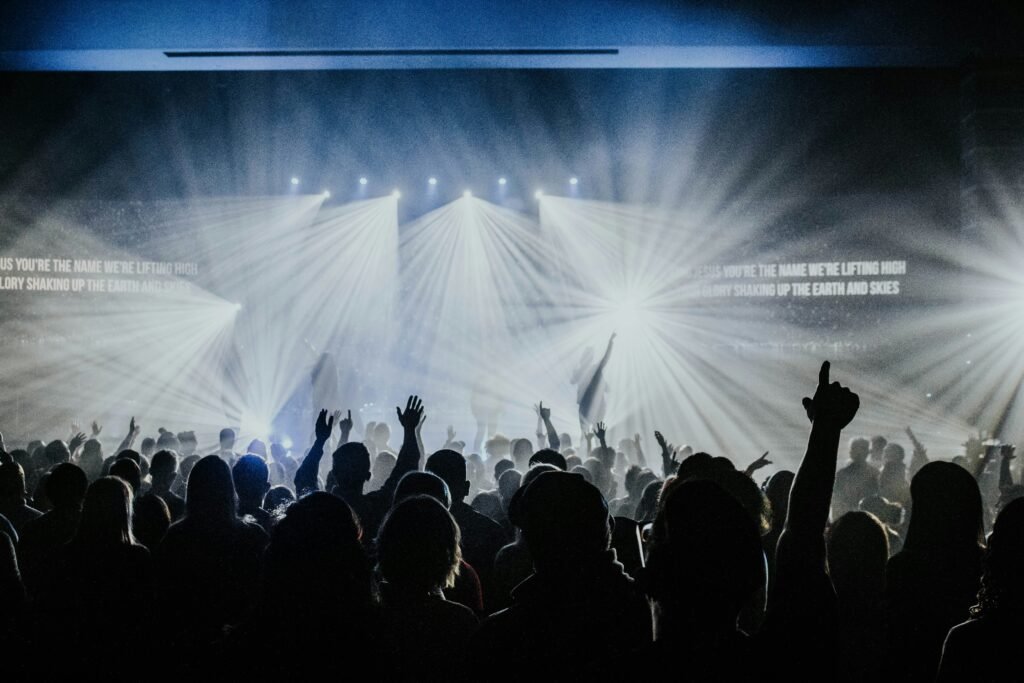Live albums capture the raw, unfiltered essence of an artist’s performance in real-time, offering a snapshot of what it’s like to experience their music on stage. Unlike studio albums, which are meticulously crafted and perfected, live recordings preserve the spontaneity, energy, and occasional imperfections of a concert. Whether it’s the roar of the crowd, the unplanned improvisations, or the heightened emotion of a live setting, these albums present a unique listening experience. But with so much emphasis placed on studio production and polished sound, it begs the question: Are live albums truly worth listening to, or do they fall short compared to their studio counterparts?
Authenticity and Atmosphere

One of the defining traits of live albums is their unpolished, authentic sound. Unlike the pristine quality of studio recordings, live albums capture the raw imperfections of a performance—the crackle of the mic, the occasional missed note, and the ambient noise of the venue. These elements, far from detracting from the experience, often add to the charm. The sound is real, unfiltered, and packed with a sense of immediacy that’s difficult to recreate in a studio setting.
What truly sets live albums apart, though, is the energy of the crowd and the artist’s spontaneous interactions with the audience. The roar of cheers between songs, the collective singing, and even the unscripted banter all contribute to an immersive atmosphere that makes the listener feel like they’re part of the event. It’s in these moments—when an artist improvises a riff or stretches out a solo—that a live album becomes more than just a recording; it transforms into a unique experience that reflects the dynamic connection between performer and audience.
Performance Quality vs. Studio Perfection
Live performances are inherently raw. There’s no retake or chance to perfect every note, and this can lead to imperfections—whether it’s a missed lyric, an off-pitch note, or an unexpected technical issue. However, these flaws can often be part of the charm, adding a layer of authenticity that studio recordings, with their meticulous production and editing, often lack. In a live setting, artists are pushed to deliver in the moment, creating a sense of urgency and spontaneity that can make even familiar songs feel fresh and unpredictable.
In contrast, studio albums represent the pinnacle of controlled sound. Every track is precisely engineered, mixed, and mastered to perfection, ensuring that what you hear is a polished final product. This level of refinement can be incredibly satisfying, especially for listeners who value clean, flawless sound. Yet, for some, this perfection can feel sterile or distant compared to the organic unpredictability of a live performance.
Ultimately, whether these imperfections enhance or detract from the experience depends on the listener’s perspective. For those who appreciate the emotional immediacy and human elements of live music, the rawness adds depth and character. For others, the flaws might feel distracting, a step down from the meticulously crafted experience of a studio album. Both approaches have their merits, but live albums offer something a studio session never can: the energy and risk of performance in real-time.
Setlists and Song Variations
One of the most compelling aspects of live albums is how they often present songs in new and unexpected forms. Artists frequently use live performances to stretch beyond the boundaries of the studio versions, offering extended solos, altered arrangements, or even combining multiple tracks into medleys. These variations can breathe new life into familiar songs, transforming them into something that feels fresh and unpredictable.
For example, an extended guitar solo or improvised instrumental section can elevate a song’s emotional intensity, while an acoustic arrangement might reveal a different layer of intimacy or vulnerability. Some live albums also feature unexpected mashups or medleys, where artists seamlessly transition between songs, creating a dynamic experience that goes beyond what was originally captured in the studio.
These live renditions often provide deeper insight into the artist’s creative vision, allowing listeners to experience different interpretations of the music. The flexibility and improvisation inherent in live performances give the artist room to experiment, take risks, and adapt to the energy of the crowd, resulting in versions of songs that can feel more personal, spontaneous, and reflective of the moment. For fans who already know the studio versions inside and out, these live variations can add richness and depth to their understanding of the music.
Sound Quality and Production Value
One of the most common criticisms of live albums is the sound quality. Compared to the clean, meticulously engineered sound of studio recordings, live albums can suffer from uneven audio levels, background noise, or poor mixing. The ambient sounds of the venue and the crowd—while adding atmosphere—can sometimes muddy the clarity of the music, leaving some listeners frustrated by the lack of precision.
However, recent advancements in live recording technology have significantly improved the audio fidelity of modern live albums. High-quality microphones, multi-track recording setups, and sophisticated mixing techniques allow engineers to capture performances with much greater detail and balance. Many contemporary live recordings now achieve a level of clarity and production value that rivals studio albums, while still preserving the energy and spontaneity of a live show.
Post-production tools like noise reduction and digital editing also enable engineers to clean up and enhance live recordings without stripping away their authenticity. For listeners who may have been put off by the sometimes harsh sound of older live albums, today’s recordings offer a far more polished and immersive listening experience, bridging the gap between live performance and studio quality.
Connection to the Artist
Live albums have a unique ability to forge a deeper connection between the listener and the artist by capturing the raw, real-time dynamics of a performance. Unlike studio albums, which can feel distant due to their precision and refinement, live recordings immerse the listener in the moment. They offer an unfiltered glimpse into the artist’s energy, emotions, and interaction with the audience, creating a sense of immediacy and intimacy.
This connection is often heightened by the spontaneity of live performances—whether it’s the way a singer improvises a vocal run, an extended instrumental jam, or the artist’s candid, off-the-cuff remarks between songs. These moments reveal the human side of the performer, making them feel more accessible and relatable to the listener.
For fans who have seen the artist live, a live album can serve as a nostalgic reminder of that experience, bringing back the excitement of the show. Even for those who haven’t attended in person, live albums can evoke a sense of being there, sharing in the communal energy of the crowd and the emotional highs of the performance. This emotional connection, whether through nostalgia or shared energy, is something that studio albums, no matter how polished, rarely achieve.
Iconic Live Albums in Music History

Several live albums have not only stood the test of time but have become essential listening, cementing their place in music history. One prime example is Live at Folsom Prison by Johnny Cash. Recorded in front of an audience of inmates, the album captures the raw intensity and emotional resonance of Cash’s performance, making it one of his most iconic works. The atmosphere of the prison adds an unparalleled authenticity, proving that a live setting can elevate both the music and the storytelling.
Another legendary live album, Frampton Comes Alive! by Peter Frampton, turned a relatively unknown artist into a superstar. The album’s extended solos and energetic performances showcased a level of musicianship and crowd engagement that catapulted it into multi-platinum success. It demonstrated how a live recording could not only enhance an artist’s career but also deliver an unforgettable experience to listeners.
Albums like The Allman Brothers Band at Fillmore East and The Who’s Live at Leeds further solidify the case for live albums. These records are celebrated for their improvisational depth and the raw power of the performances, offering versions of songs that many argue surpass their studio counterparts.
Closing Thoughts: Are Live Albums Worth It?
Live albums offer a distinct experience, blending raw performance energy with the unpredictability of real-time music. On the plus side, they capture the authenticity and spontaneity of live performances, often revealing new dimensions to familiar songs through improvisation and altered arrangements. The crowd’s energy and the unfiltered atmosphere can make listeners feel as if they are part of the moment, fostering a deeper connection to the artist. For fans, they can also serve as nostalgic keepsakes, preserving the excitement of a live show.
However, live albums also come with potential downsides. Sound quality may not match the pristine production of studio recordings, and for some listeners, the imperfections—like audience noise or performance flaws—can be distracting. Moreover, the unpredictability that makes live albums exciting for some may feel messy or unrefined to others.
